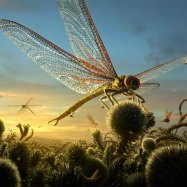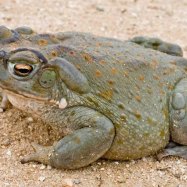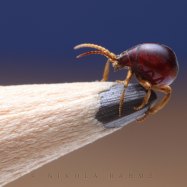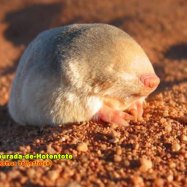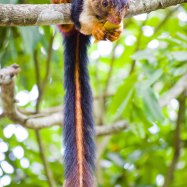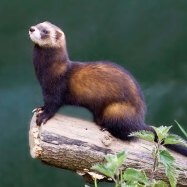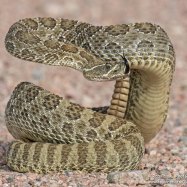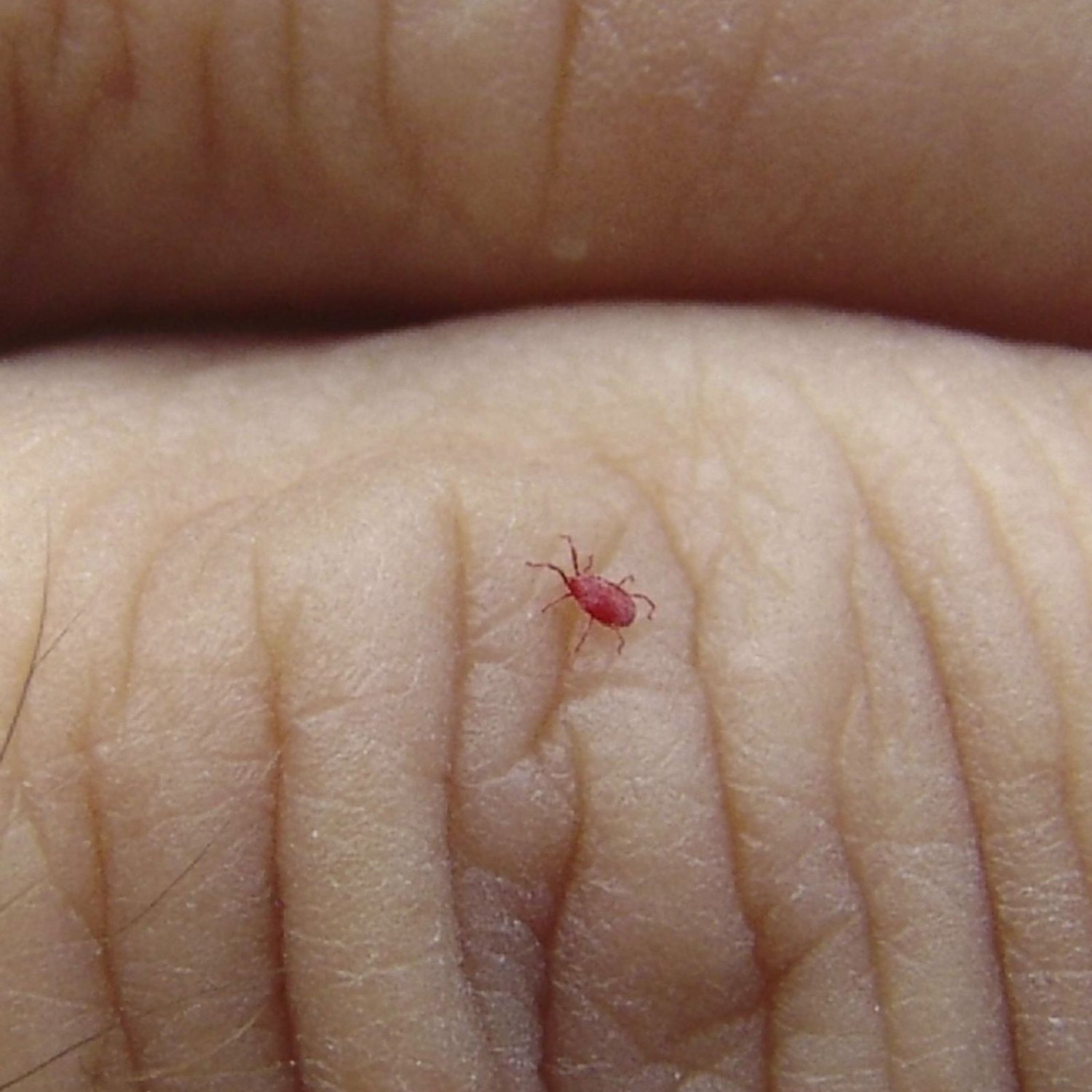
Chigger
0.2 to 0.4 mm
Did you know that the tiny and oval-shaped Chigger belongs to the Trombiculidae family and can be found in tropical and subtropical regions? These tiny pests, measuring only 0.2 to 0.4 mm in length, can cause intense itching when they bite. Be sure to take precautions when exploring these areas to avoid these bothersome critters! #Chigger #Trombiculidae #bugbites #tropical #subtropical
Animal Details Summary:
Common Name: Chigger
Kingdom: Animalia
Habitat: Grasslands, forests, and moist areas
The Intriguing World of Chiggers: The Tiny Ectoparasite Living in Your Backyard
If you have ever been out for a hike or a walk in the woods and returned home with an incessant itch, you have probably been a victim of chigger bites. These minuscule arachnids, known as chiggers, are a part of the Trombiculidae family and can be found living in grasslands, forests, and moist areas all around the world. Though they may be small, their bites can cause intense itching and discomfort, making them some of the least anticipated house guests.But what exactly are chiggers, and why do they leave us with such an unpleasant experience? In this article, we will delve into the fascinating world of chiggers, their physical attributes, habitats, and feeding habits, and learn how to avoid their bites Chigger. By the end, you will have a newfound appreciation for these tiny creatures living in your backyard.
The Arachnid in Disguise
Scientifically known as Trombiculidae, this tiny creature goes by many names, such as berry bugs, harvest mites, red bugs, and scrub-itch mites. However, the name that is most commonly used and recognized is the chigger. This name is believed to have originated from the Jamaican word "chigoe," which means "jigger," a type of flea found in Central and South America.Despite being called a "bug," chiggers are not insects but are rather true arachnids. This means that they are more closely related to spiders, ticks, and scorpions than they are to insects. Chiggers are a part of the Arthropoda phylum, which makes up 90% of all animal species on Earth. This diverse phylum also includes insects, crustaceans, and millipedes.
The Habitat of Chiggers
Chiggers can be found in all tropical and subtropical regions around the world, including the United States, Canada, Europe, and Australia Chihuahua Mix. However, their country of origin is still unknown. They thrive in environments that are moist, warm, and have ample vegetation, making them a common sight in grasslands, forests, and humid areas. In gardens and backyards, chiggers can be found in tall grass, shrubs, and bushes, as they rely on these areas for shelter and food sources.Physical characteristics of Chiggers
Chiggers are tiny creatures, measuring only 0.2 to 0.4 mm in length, making them almost invisible to the naked eye. They have a distinctive red, orange, or yellow coloration, with six legs and a soft, oval-shaped body. Their short and thick legs are adapted for crawling and gripping onto surfaces, allowing them to move quickly and efficiently on their hosts' skin. Though tiny, chiggers can be easily identified by their bright red color, making them stand out amidst the green foliage.The Feeding Habits of Chiggers
One of the most intriguing things about chiggers is their feeding method. These tiny arachnids are ectoparasites, which means they feed on other animals' skin or on the outer body surfaces of their hosts. However, unlike other parasites, chiggers do not suck blood. Instead, they feed on skin cells, piercing through the host's skin and injecting saliva that breaks down the skin cells' contents. The enzyme in the saliva then digests the skin cells' contents, providing the chiggers with nutrients to feed on.Chiggers do not feed on a specific host but are rather opportunistic feeders, meaning they will feed on any warm-blooded animal that they come across. This includes mammals, such as humans, livestock, rodents, and even birds and reptiles. However, chigger bites are most commonly encountered by humans, as we tend to venture into their habitats for leisure activities.
The Impact of Chigger Bites
While chiggers may not cause any significant harm to their hosts, their bites can cause a significant amount of discomfort. The saliva injected by chiggers can cause intense itching, blisters, and welts on the skin, which can last for several days. The itching may also lead to skin infections, such as impetigo, if not treated properly.The worst part about chigger bites is that the symptoms often manifest hours after the bites occur. This is because the enzyme in the chigger's saliva takes some time to break down the skin cells' contents. This delayed reaction can make it challenging to pinpoint exactly where and when the bites occurred, making it harder to prevent future bites.
Preventing Chigger Bites
Now that you know the potential impact of chigger bites, it is essential to know how to prevent them. The good news is, there are simple steps you can take to avoid being bitten by chiggers.First and foremost, when venturing into areas that have tall grass, shrubs, or dense vegetation, make sure to wear long-sleeved shirts, long pants, and closed-toe shoes. Chiggers cannot bite through clothing, so this provides an effective barrier against their bites. It is also recommended to tuck your pants into your socks to prevent chiggers from crawling up your legs. Wearing light-colored clothing can also make it easier to spot any chiggers that may have hitchhiked onto your clothes.
Secondly, use insect repellents that contain DEET or permethrin. When applying these repellents to your skin, make sure to cover all exposed areas. Pay particular attention to areas behind the knees, underarms, and waistband, as these are chiggers' favorite spots to bite. It is also crucial to follow the instructions on the repellent's label and reapply as directed.
After spending time in potential chigger habitats, it is essential to take a shower immediately, and thoroughly scrub your skin with soap and water. This will help remove any chiggers or their larvae that may have attached to your skin. It is also recommended to change clothes and wash them in hot water to kill any remaining chiggers.
Final Thoughts
In the world of tiny creatures, chiggers stand out as one of the most unique and intriguing ones. Though they may be small, they play a significant role in the ecosystem, feeding on dead skin cells and providing food for other animals. However, their bites can cause discomfort and irritation, making it essential to take precautions when venturing into their habitats.With their distinctive red color and their unique feeding method, chiggers have made a name for themselves in the natural world. Though they may not be the most beloved creatures, it is important to remember that they are a vital part of our ecosystem. Next time you encounter these tiny arachnids, take a moment to appreciate their fascinating characteristics and the role they play in the natural balance of our world.

Chigger
Animal Details Chigger - Scientific Name: Trombiculidae
- Category: Animals C
- Scientific Name: Trombiculidae
- Common Name: Chigger
- Kingdom: Animalia
- Phylum: Arthropoda
- Class: Arachnida
- Order: Trombidiformes
- Family: Trombiculidae
- Habitat: Grasslands, forests, and moist areas
- Feeding Method: Ectoparasite
- Geographical Distribution: Worldwide
- Country of Origin: Unknown
- Location: Tropical and subtropical regions
- Animal Coloration: Red, orange, or yellow
- Body Shape: Oval and tiny
- Length: 0.2 to 0.4 mm
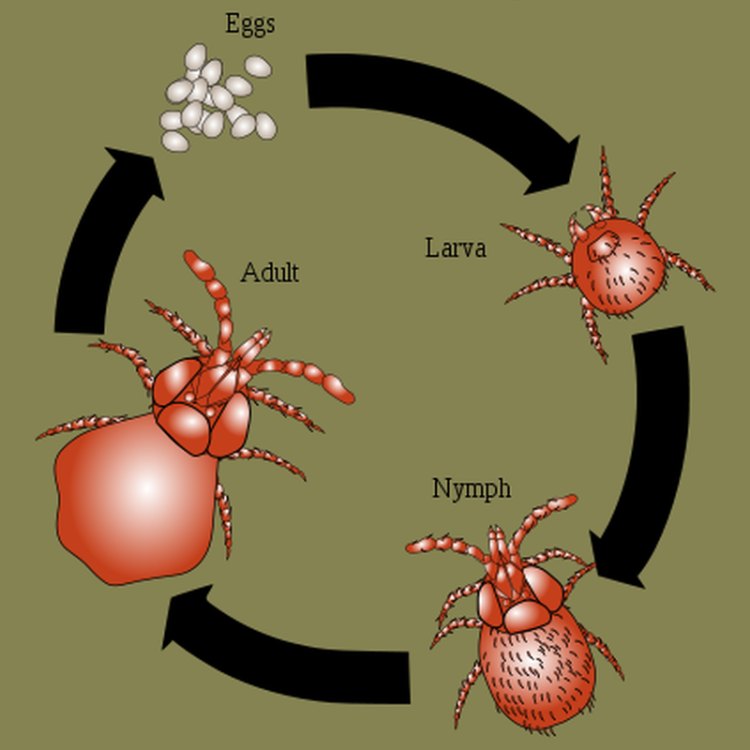
Chigger
- Adult Size: 0.2 to 0.4 mm
- Average Lifespan: 2 to 4 months
- Reproduction: Sexual
- Reproductive Behavior: Males attach themselves to females and fertilize eggs externally
- Sound or Call: None
- Migration Pattern: Non-migratory
- Social Groups: Solitary
- Behavior: Feed on the skin of animals and humans causing itching and rashes
- Threats: None
- Conservation Status: Not evaluated
- Impact on Ecosystem: None
- Human Use: None
- Distinctive Features: Tiny size, reddish color, and prominent mouthparts
- Interesting Facts: Chiggers are not insects but mites. They are the larval stage of trombiculid mites.
- Predator: Some birds and insects
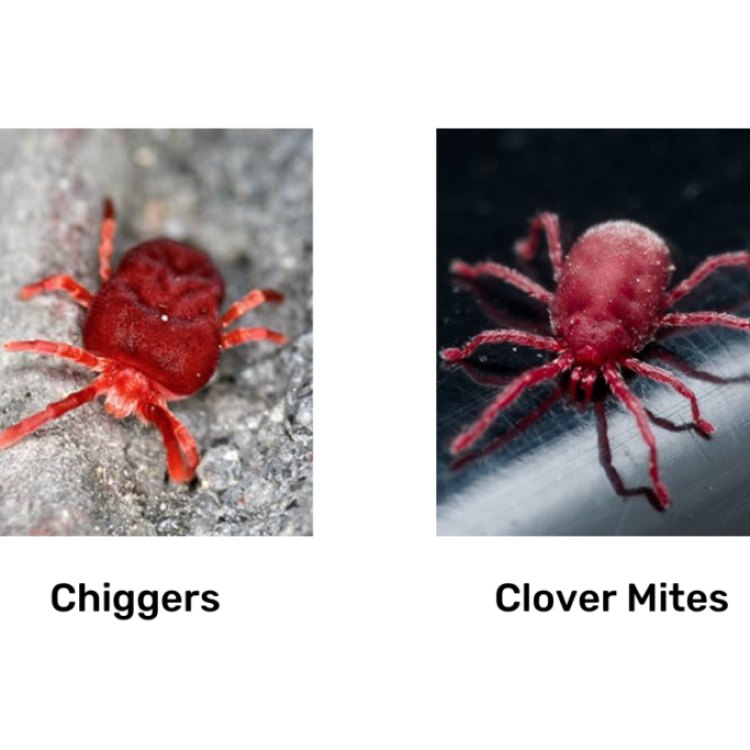
Trombiculidae
The Intriguing World of Chiggers: Tiny Yet Mighty Mites
When we think of pests, the image of big and scary insects might come to mind. But what if I tell you that there is a creature that measures only 0.2 to 0.4 mm, yet its presence can cause severe itching and rashes on our skin? Yes, I'm talking about chiggers – the tiny but mighty mites that have intrigued scientists and puzzled victims for centuries PeaceOfAnimals.Com.Chiggers, also known as harvest mites or red bugs, belong to the family Trombiculidae, which is a type of mite commonly found in North America, Europe, and Asia. They are often mistaken for insects, but in reality, they are arachnids, closely related to spiders and ticks. Unlike spiders, they do not have eight legs; instead, they have six. And unlike ticks, they do not feed on the blood of their hosts. But don't let their small size fool you; chiggers are known for their painful bite and the irritation they cause.
Let's dive deeper into the world of these intriguing creatures and explore their unique features, behavior, and impact on the ecosystem.
Size and Lifespan
As mentioned earlier, chiggers are incredibly small, measuring only 0.2 to 0.4 mm in length Cinnamon Ball Python. To put it into perspective, they are smaller than a grain of salt! This tiny size makes them almost invisible to the naked eye, and they easily go unnoticed until their bites start to itch.Despite their diminutive size, chiggers have a relatively long lifespan for their size. They can live up to 2 to 4 months in their larval stage, which is when they cause the most trouble for humans and animals.
Reproduction and Behavior
Chiggers reproduce sexually, with females laying eggs after mating. But the unique part of their reproductive behavior is that males attach themselves to the females and fertilize the eggs externally. Once the eggs hatch, the larvae (chiggers) start their search for a host.These larvae have a unique behavior that often surprises people. Unlike other mites that burrow into the skin, chiggers do not bite or burrow into our skin. Instead, they feed on the top layer of our skin, injecting digestive enzymes that break down our skin cells. This process causes intense itching and irritation, which can last for days.
To find a suitable host, chiggers use their sense of touch, heat, and carbon dioxide. They are often found in tall grass or vegetation, waiting for a passing host to latch onto. Small animals, such as mice, rabbits, and birds, are their primary hosts. But they can also bite humans if they come in contact with them.
Distinctive Features
Despite their tiny size, chiggers have some unique physical characteristics that make them stand out. They have a reddish-orange color, which is why they are often referred to as "red bugs." But their most distinctive feature is their mouthparts, which are visible under a microscope. These mouthparts are used to feed on the skin of their hosts, causing the trademark itching and rashes.Interesting Facts
As if their small size and painful bites weren't interesting enough, here are a few more fascinating facts about chiggers:- Chiggers are not insects; they are mites, just like spiders and ticks.
- They are the larval stage of trombiculid mites, and their larval form is the only stage that feeds on the skin of animals and humans.
- Chiggers are more active during the summer and early fall, when the weather is warm and humid.
- They are most commonly found in grassy areas, but they can also be found in forests, gardens, and sometimes even inside our homes.
Impact on Ecosystem
Despite their nuisance to humans, chiggers do not pose a significant threat to the environment or the ecosystem. They do not transmit diseases and are not known to cause any harm to plants or animals. In fact, they serve as an essential food source for some birds and insects, such as ants and beetles.So, if you come across a chigger, don't be too quick to squash it as it plays a crucial role in the food chain.
Human Use
Unlike other pests, chiggers are not known to have any significant human use. In some cultures, chiggers are used as medicine to cure skin conditions, but there is no scientific evidence to support their effectiveness.Predators
As mentioned earlier, chiggers serve as a vital food source for some birds and insects. But they do have a few predators that pose a threat to their population. Some species of birds, such as quails and robins, feed on chiggers, along with other insects. Some spiders and parasitic wasps also prey on chiggers as a food source for themselves or their offspring.Threats and Conservation Status
Fortunately, chiggers are not considered a threatened or endangered species. They are found in abundance in many parts of the world and do not face any significant threats to their population.How to Avoid Chigger Bites
If you live in an area where chiggers are prevalent, here are a few tips to avoid getting bitten:- When going outdoors, wear long sleeves and pants, and tuck them into your socks.
- Use insect repellent containing DEET on exposed skin.
- Avoid walking through tall grass or dense vegetation.
- After spending time outside, take a shower and wash your clothes in hot water to get rid of any chiggers.
Treating Chigger Bites
If you do get bitten by chiggers, here are a few tips to ease the itching and discomfort:- Wash the affected area with soap and water.
- Apply a cold compress to the bite to reduce swelling and itching.
- Resist the urge to scratch as it can lead to an infection.
- Over-the-counter anti-itch creams and antihistamines can also help alleviate symptoms.
If the symptoms persist or become severe, it is best to consult a doctor for proper treatment.
In Conclusion
Chiggers may be tiny, but they certainly have a mighty impact when it comes to their bites. But despite their itchy reputation, they play an essential role in the ecosystem and are not considered a significant threat to humans or the environment. So, the next time you come across a chigger, instead of swatting it away, take a moment to appreciate its unique features and admire its purpose in the natural world.
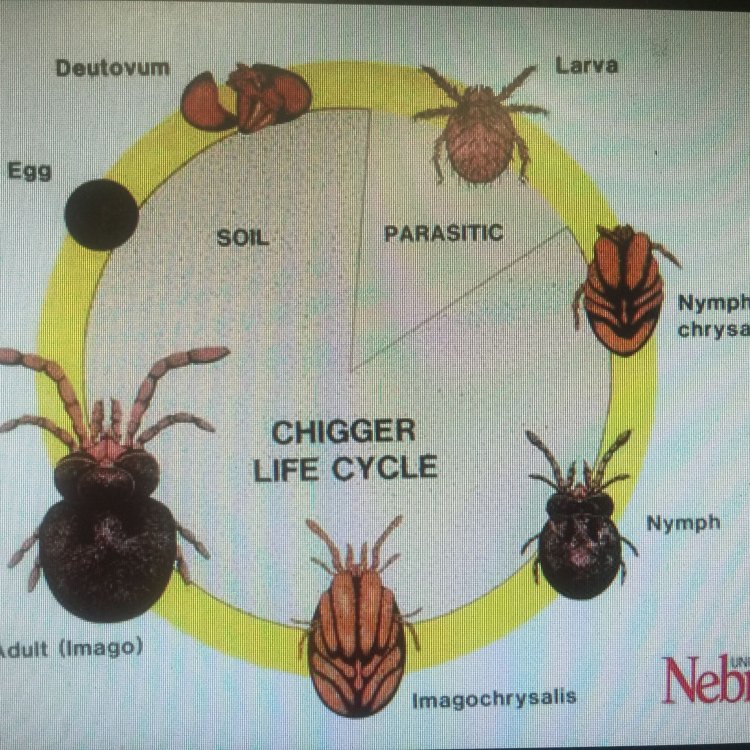
The Intriguing World of Chiggers: The Tiny Ectoparasite Living in Your Backyard
Disclaimer: The content provided is for informational purposes only. We cannot guarantee the accuracy of the information on this page 100%. All information provided here may change without prior notice.

